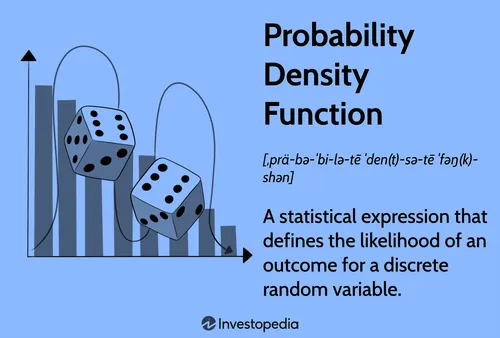Demystifying Probability Density: A Deep Dive into Density Estimation
 Saurabh Naik
Saurabh Naik
Introduction:
Probability density plays a crucial role in understanding the distribution of data. In this blog post, we will unravel the intricacies of probability density functions (PDFs) and explore the nuances of parametric and non-parametric density estimation techniques.
Probability Density Function vs. Probability Mass Function:
The probability density function (PDF) is a concept often confused with the probability mass function (PMF). While the PMF gives the probability of discrete random variables, the PDF deals with continuous random variables. The key distinction lies in the infinitesimally small intervals on the x-axis in the case of PDF.
Understanding Probability Density:
On the y-axis of a PDF, you won't find probabilities but probability density. This is because, in continuous distributions, the probability of a specific point is technically zero. The area under the curve represents the probability of the variable falling within a particular range.
Calculating Probability Density:
Parametric Density Estimation:
Definition: Parametric density estimation assumes that the data follows a known distribution (normal, exponential, etc.).
Methodology: Fit the data to the assumed distribution using methods like maximum likelihood estimation.
Use Case: Ideal for common distributions where the parameters are well-defined.
Non-Parametric Density Estimation:
Definition: Non-parametric density estimation makes no assumptions about the underlying distribution.
Methodology: Utilizes the observed data directly to estimate the density, providing more flexibility.
KDE (Kernel Density Estimation): An effective non-parametric method, KDE employs a kernel (smoothed function) for each data point and combines them to form a continuous density estimate.
Conclusion:
Probability density is a fundamental concept in statistics, providing a continuous perspective on the likelihood of different outcomes. Understanding parametric and non-parametric density estimation methods equips data scientists with powerful tools for analyzing various types of distributions.
Subscribe to my newsletter
Read articles from Saurabh Naik directly inside your inbox. Subscribe to the newsletter, and don't miss out.
Written by

Saurabh Naik
Saurabh Naik
🚀 Passionate Data Enthusiast and Problem Solver 🤖 🎓 Education: Bachelor's in Engineering (Information Technology), Vidyalankar Institute of Technology, Mumbai (2021) 👨💻 Professional Experience: Over 2 years in startups and MNCs, honing skills in Data Science, Data Engineering, and problem-solving. Worked with cutting-edge technologies and libraries: Keras, PyTorch, sci-kit learn, DVC, MLflow, OpenAI, Hugging Face, Tensorflow. Proficient in SQL and NoSQL databases: MySQL, Postgres, Cassandra. 📈 Skills Highlights: Data Science: Statistics, Machine Learning, Deep Learning, NLP, Generative AI, Data Analysis, MLOps. Tools & Technologies: Python (modular coding), Git & GitHub, Data Pipelining & Analysis, AWS (Lambda, SQS, Sagemaker, CodePipeline, EC2, ECR, API Gateway), Apache Airflow. Flask, Django and streamlit web frameworks for python. Soft Skills: Critical Thinking, Analytical Problem-solving, Communication, English Proficiency. 💡 Initiatives: Passionate about community engagement; sharing knowledge through accessible technical blogs and linkedin posts. Completed Data Scientist internships at WebEmps and iNeuron Intelligence Pvt Ltd and Ungray Pvt Ltd. successfully. 🌏 Next Chapter: Pursuing a career in Data Science, with a keen interest in broadening horizons through international opportunities. Currently relocating to Australia, eligible for relevant work visas & residence, working with a licensed immigration adviser and actively exploring new opportunities & interviews. 🔗 Let's Connect! Open to collaborations, discussions, and the exciting challenges that data-driven opportunities bring. Reach out for a conversation on Data Science, technology, or potential collaborations! Email: naiksaurabhd@gmail.com